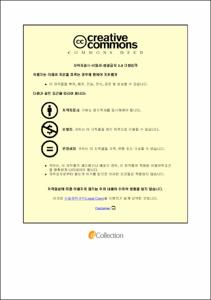Ulsan Univ. Repository
Thesis
General Graduate School
Mechanical & Automotive Engineering
1. Theses (Master)
파우더 베드 퓨전 방식의 적층 제조 시뮬레이션을 이용한 마레이징강 C300 분말소재의 스케일링 계수 보정에 관한 연구
- Abstract
- This study was conducted with the aim of establishing a simulation method that corrects the scaling factor in order to improve the accuracy of the simulation software in the additive manufacturing process of Maraging Steel C300 powder material. For this study, two studies were conducted to achieve the aims. First, the shape of the Additive Manufacturing sample was analyzed through literature investigation on the existing Additive Manufacturing simulation research. And the sample shape for Additive Manufacturing simulation of this study was selected from the analyzed result. Second, based on the selected sample shape, the scaling factor was corrected through the manufacture and measurement of Additive Manufacturing samples and iterative simulation. The procedure for calibration of the scaling factor was performed through the manufacture of an AM sample, measurement of deformed distortion and iterative simulation, based on the selected cantilever beam shape. For the manufacture of the Additive Manufacturing sample, the C300 powder material of Maraging Steel and Powder Bed Fusion method equipment were used. The distortion measurement of the manufactured Additive Manufacturing sample was performed before and after removal of the support according to the simulation purpose. The parameters for powder materials and equipment required for sample manufacture were applied from the optimized environment provided by the manufacturer. All parameters for the powder material and equipment used to prepare the Additive Manufacturing sample were applied equally to the scaling factor simulation. Simulations for scaling factor correction were performed for Assumed Strain mode, Thermal Strain mode and Pattern Scanning mode respectively. In addition, the Pattern Scanning mode simulation was performed for the scanning (starting and rotating) angles of 0°, 90° and 67° respectively. Distortion was measured from each simulation result and the scaling factors SSF and ASC were calculated. These simulation and calculation process were repeated until the distortion error was less than 1%. The scaling factors SSF and ACS for the cantilever beam in this study are as follows: First, the correction value SSF of the optimized shape in the assumed strain and scanning mode is 15.89, while in the thermal strain mode, the SSF is optimized value is 8.3892. (at point A) Second, the correction value 〖ASC〗_∥ and 〖ASC〗_⊥ of the optimized shape in the scanning mode is both 1, and the value of 〖ASC〗_∥=1.0048,〖ASC〗_⊥=0.9952in the thermal strain mode respectively. (at point A) Third, the correction value SSF of the optimized shape in the assumed strain mode is 33.41 scan pattern mode is 31.65, while in the thermal strain mode, the SSF is optimized value is 17.3105. (at point B) Forth, the correction value ASC_∥ and ASC_⊥ of the optimized shape in the scan pattern simulation is 〖ASC〗_∥=0.29, 〖ASC〗_⊥=0.71, and the value of 〖ASC〗_∥=0.2962, 〖ASC〗_⊥=1.7038 in the thermal strain simulation respectively (at point B).
The final validation of the scaling factor derived through this study can be confirmed through shape compensation of the AM sample and manufacturing of the AM sample. However, it was not verified in this study. Therefore, this study needs additional research in the future.
- Issued Date
- 2021
- Awarded Date
- 2021-02
- Type
- Dissertation
- Alternative Author(s)
- Zhang Gaoqi
- Affiliation
- 울산대학교
- Department
- 일반대학원 기계자동차공학과
- Advisor
- 염영진
- Degree
- Master
- Publisher
- 울산대학교 일반대학원 기계자동차공학과
- Language
- eng
- Appears in Collections:
- Mechanical & Automotive Engineering > 1. Theses (Master)
- 파일 목록
-
-
Download
 200000367809.pdf
기타 데이터 / 3.27 MB / Adobe PDF
200000367809.pdf
기타 데이터 / 3.27 MB / Adobe PDF
-
Items in Repository are protected by copyright, with all rights reserved, unless otherwise indicated.